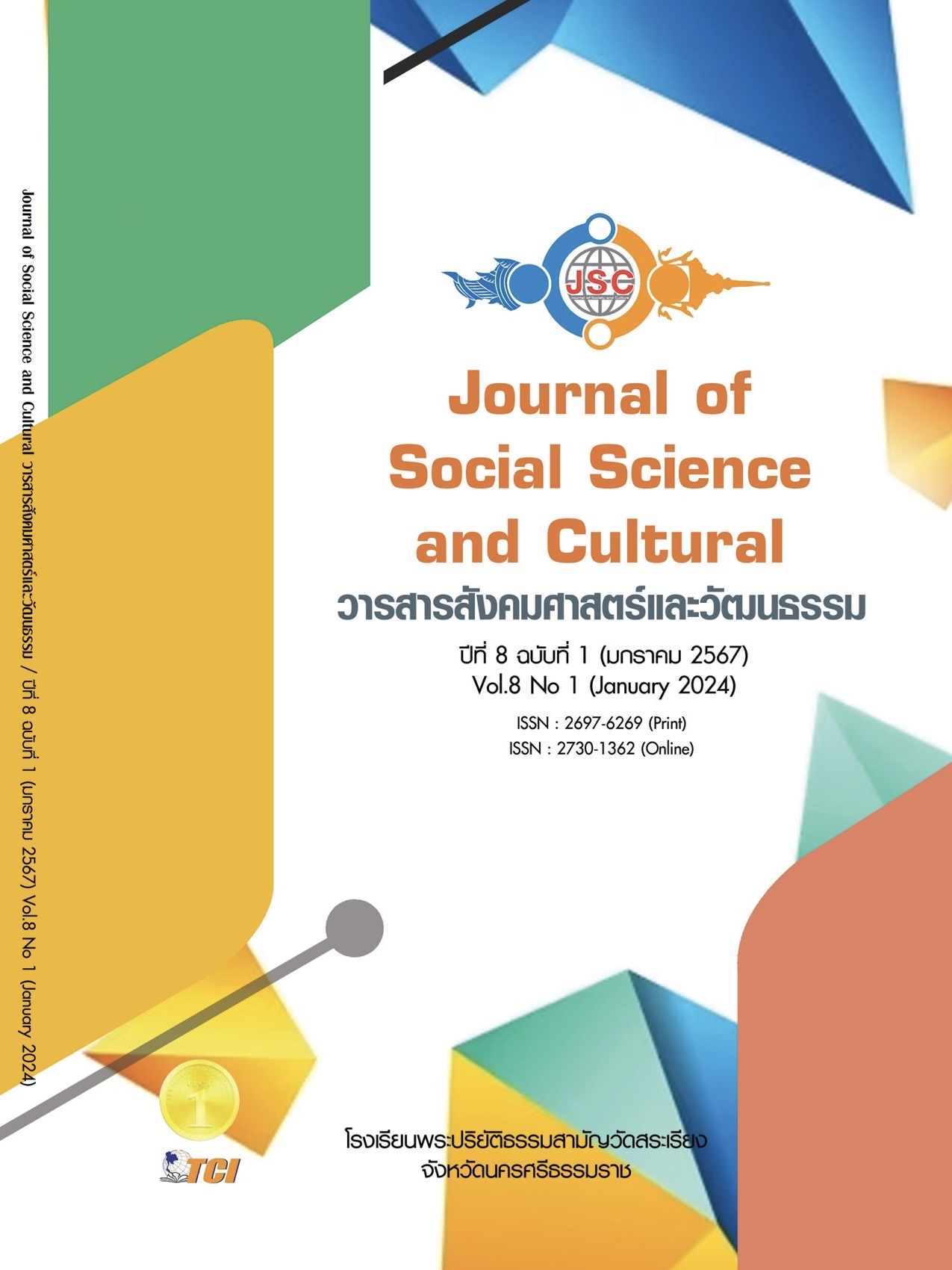PROACTIVE LEARNING MANAGEMENT STRATEGY
Main Article Content
Abstract
The strategy of proactive learning management is an approach that presents learning in a new perspective with three systemic components: input, process, and product. This strategy entails the necessity of organizing various facilitative factors in teaching and learning, such as documents, audiovisual aids, projectors, air quality, food, desks, chairs, cleanliness of the classroom, curtains, flowers, etc. It emphasizes the process where learners actively participate in their learning through questioning, group activities, discussions, presentations, singing, expressing opinions, reflecting thoughts, critiquing, role-playing, and more. The primary aim is to enable learners to achieve learning outcomes in terms of ethics, mindset, and behavioral skills. The strategy involves arranging activities and learning experiences that actively engage learners in the learning process, awakening their intellectual, social, emotional, perceptual, and physical aspects. A key principle of proactive learning management is to involve learners actively in the learning process, enabling them to seek, select, and create knowledge independently. Teachers play a crucial role in orchestrating activities that maximize learner involvement and creating an inclusive atmosphere. The importance of proactive learning management lies in fostering collaboration among learners, encouraging their active participation in teaching and learning, and creating a conducive learning environment that prioritizes learner-centric learning.
Article Details
References
กระทรวงศึกษาธิการ. (2560). คู่มือประกอบการอบรมการขับเคลื่อนกระบวนการ PLC (Professional Learning Community) “ชุมชนการเรียนรู้ทางวิชาชีพ” สู่สถานศึกษา. กรุงเทพมหานคร: กระทรวงศึกษาธิการ.
กอบสุข คงมนัส. (2561). “เครื่องมือดิจิทัลเพื่อการเรียนรู้ : วิถีแห่งการศึกษายุคดิจิทัล”. วารสารศึกษาศาสตร์ มหาวิทยาลัยนเรศวร, 20(4), 285-290.
ทิศนา แขมมณี และคณะ. (2563). การจัดการเรียนรู้เชิงรุกฐานสรรถนะเชิงรุก. กรุงเทพมหานคร: สำนักงานเลขาธิการสภาการศึกษา.
บังอร เสรีรัตน์. (2565). การเรียนการสอนฐานสมรรถนะและการวัดและประเมินผลฐานสมรรถนะ. กรุงเทพมหานคร: สำนักงานเลขาธิการสภาการศึกษา.
สำนักงานคณะกรรมการการศึกษาขั้นพื้นฐาน. (2562). แนวทางการนิเทศเพื่อพัฒนาและส่งเสริมการจัดการเรียนรู้เชิงรุก (Active Learning) ตามนโยบายลดเวลาเรียนเพิ่มเวลารู้. กรุงเทพมหานคร: กระทรวงศึกษาธิการ.
Bakir, S. (2014). 5th grad students, opinions about active learning environment. Procedia-Social and Behavioral Science, 116(2014), 3553-3558.
Bonwell, et al. (1991). Active Learning: Creating Excitement in the Classroom. Washington, DC: ERIC Clearinghouse on Higher Education, George Washington University.
Dick, W. & Carey, L. (1996). The systematic design of instruction. (4 th ed). New York: Longman.
DuFour, R.et al. . (2006). Learning by Doing. A Handbook for Professional Learning Communities at Work. Bloomington, IN: Solution Tree Press.
Duke,D. L. (1990). Teaching an introduction. New York: Mc Graw-Hill.
Joyce, B. & Shower, B. (1992). The Coaching of Teaching. London: Allyn and Bacon.
Joyce, B. & Weil. M. (2000). Models of Teaching. (6 th ed.). Boston: Allyn and Bacon.
Lewis, C. (2002). Lesson Study: A handbook of Teacher-led instructional change. Phidadelphia, PA: Research for better school.


